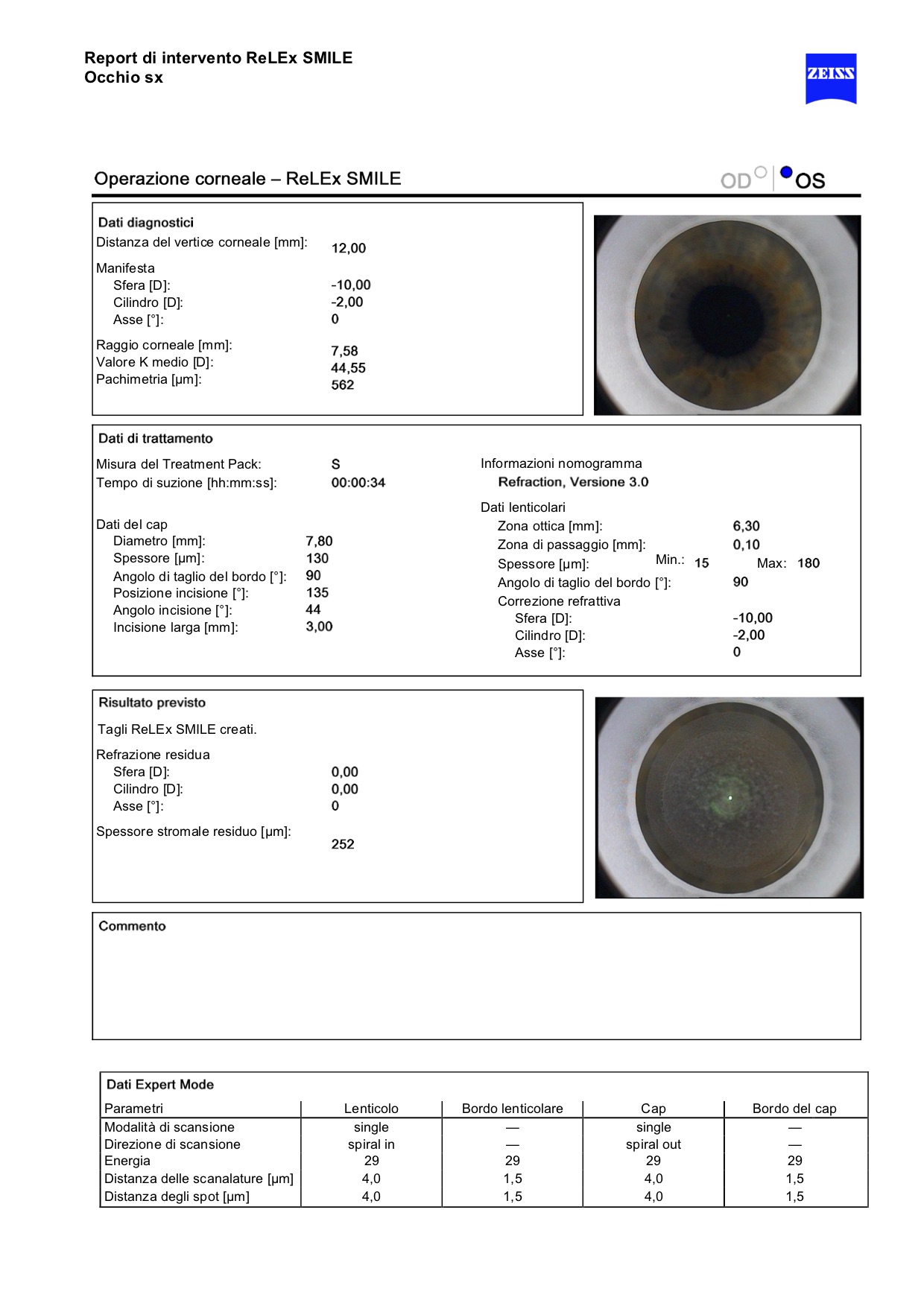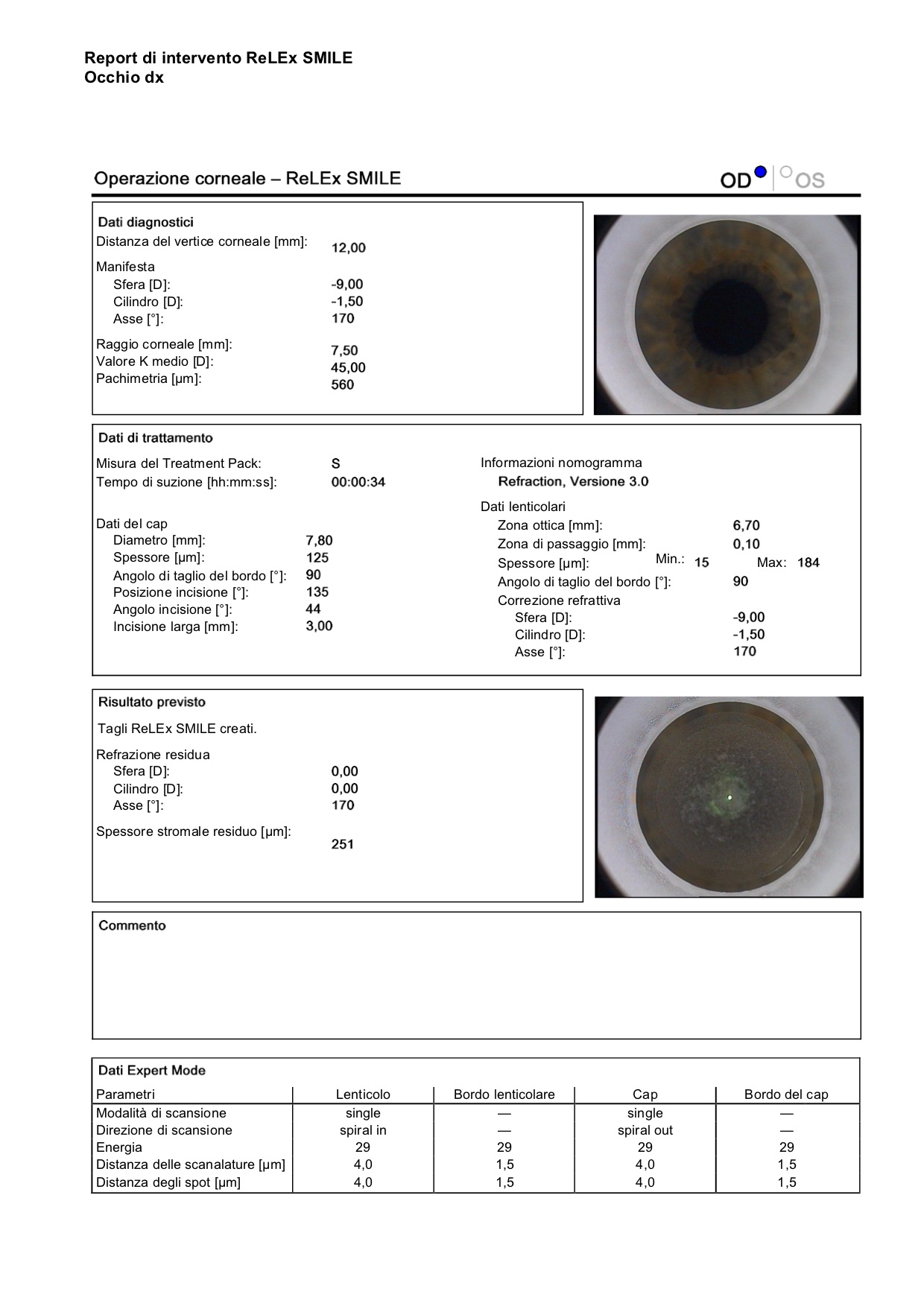How I treated Myopia in a patient who had been operated on for retinal detachment

Recently a young female entrepreneur from Puglia (a region in south Italy) contacted me to find a cure for her refractive disorder.
The Lady was affected by high myopia in both eyes but most importantly she suffered from anisometropia (an imbalance in the power of the two eyes to refract light) caused by a previous surgery undergone for retinal detachment.
Th technique used to treat her retinal detachment was scleral encircling and bukling, a technique that consists in treating the retinal breaks through critherapy or other means in conjunction with encircling or per forming a sector bukling of the eye using silicon bands or sponges.
This type of surgery elongates the eyeball with a consequential aggravation of myopia.
This is exactly what happened in her case and in the operated eye her Myopia worsened of 3 dioptres.
Furthermore, because of the operation and other issues the patient was not able to tolerate contact lenses and was forced to use only eye-glasses.
This anisometyric condition meant that to maintain an evenness between the lenses and not create imbalances in her binocular vision, the eye with the lesser defect was corrected perfectly whilst the eye with more Myopia (the one previously operated for retinal detachment) only partially.
Inevitably the patient suffered a lot for this situation, she suffered for the limitations sub sequential to her sudden vision deterioration and mostly because she couldn’t accept, being so young, that for the rest of her life she would have had to live with such a discomfort.
At this point she decides to contact the specialist that had performed the previous surgery to find a solution to her refractive disorder. The specialist initially advised her against a surgical approach, then told her that the best result she could expect using the PRK technique not only would be sub-par, but she would still maintain 4 to 5 dioptres of myopia. The specialist argued that any kind of laser-surgery would not have a positive outcome due to her previous surgery and the lack of efficiency of laser-surgery in general.
Without dwelling on the merit of such a statement, what left me most perplexed was that the previously mentioned “specialist” made his evaluation without performing routine pre-surgical exams and test (topography, pachimetry, pupillometry ecc.) without wich he could not have had the data to express an opinion. Furthermore, he never contacted a refractive specialist to investigate whether there existed a better solution for his patient
The specialist in other words without having any data or objective evidence decided that a surgical approach was unwise and that in the best scenario it wouldn’t even give any positive result.
The patient, discouraged by the retina specialist words, continued to wear under-corrected glasses and lived her life with all the problematics that come with wearing such glasses; she develops asthenoipic symptoms such as headaches, imbalance in the vision, dizziness, lack of stereopsis etc. After having suffered these symptoms for a while she decides to search for another opinion, she does her research on internet and thanks also to advice from other entrepreneurs who I had treated in the past, she contacts me through email.
After having heard her story I explain to her that a residual of 4-5 dioptres of myopia after PRK treatment is quite unheard of, and most importantly I explain that there are many other possible techniques that can be used to solve her issue, but further exams and tests are to be done before confirming any kind of treatment plan.
Furthermore, I assure her that scleral encircling and bukling are not a contraindication for refractive surgery.
The patient, having nothing to lose, decides to undergo the pre-operative examination where she is put through several tests. The tests show that she is eligible for the ReLEx SMILE refractive technique with which I would be able to completely correct one eye and leave a small residual of 1 dioptres in the eye that had been previously operated on. I would then on a later date re-treat the residual with PRK to eliminate the problem.
This because the SMILE technique can correct only up to 10 dioptres of myopia.
Encouraged by my assessment the woman decides to undergo the procedure, and the result using the ReLEx SMILE technique is a huge success.
The eye without retina detachment reaches a final visus of 12/10 whilst the other, who had been previously treated for retinal detachment, is left with only 1 dioptres of myopia that is corrected with her glasses leaving her with 10/10 vision.
The result satisfies the patient who now doesn’t suffer from the symptoms that tormented her till now. We also decide that further treatment at the moment was not necessary for she was more than happy with the result so far.
Treatment of retinal detachment through retinal encircling and bukling always has deteriorative refractive effects, luckily today thanks to techniques like ReLEx SMILE we can resolve these issues in little time without important secondary effects and most importantly without repercussions on the retina.
We must remember though that it is impossible evaluate which technique is most suitable for one’s refractive disorder without first undergoing specific tests. This is true for the patient who wants to receive treatment and for the specialist who offers such treatment.
In doubtful cases it’s always best to refer to a refractive specialist for not always those who treat other kinds of eye problematics have the resources and experience to evaluate correctly the situation.
Below who can see the tests results of the patient:



Envision Your Vacation
Let’s be honest, spring is inspiring not only because trees are in full bloom but…

Be Aware of Light
Have you ever wondered why light is so gentle and warm at sunrise and sunset…

Give Yourself a Gift: Good Vision
A couple of days ago a friend texted me that while at lunch with one…